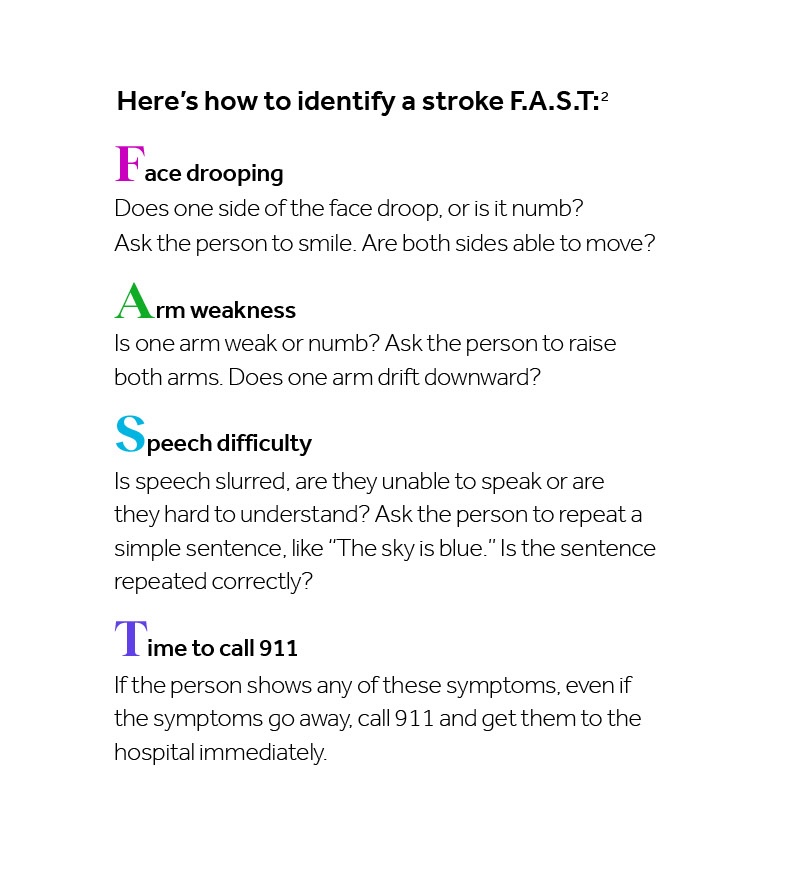Recognizing heart attack and stroke symptoms saves lives

About every 40 seconds, someone in the United States has a heart attack or stroke.1
Recognizing heart attacks
It happens every minute of every day, all year long. Every heart attack behaves differently, but the result is ultimately the same. The blood flow that brings oxygen to the heart muscle is severely reduced or cut off completely.2
For the person experiencing the heart attack, symptoms can vary. Most heart attacks involve discomfort in the center of the chest that lasts more than a few minutes. It can come on suddenly and intensely or start off mild and may go away and come back.
Heart attacks are the #1 killer of women, perhaps because the symptoms are not initially recognized as a heart attack. The symptoms here are most common. Women may dismiss them, thinking that they are signs of less severe conditions like acid reflux, the flu or just normal aging.2
Other heart attack symptoms include:
- Uncomfortable pressure, squeezing, fullness or pain in the chest or torso
- Pain or discomfort in one or both arms, the back, neck, jaw or stomach
- Shortness of breath with or without chest discomfort
- Breaking out in a cold sweat
- Nausea with or without vomiting
- Lightheadedness
- Indigestion
- Heartburn
Recognizing stroke symptoms
Strokes are one of the leading causes of death and disability in the United States.3 Strokes also involve the arteries, but those leading to the brain. Arteries carry oxygenated blood.
The majority of strokes occur when an artery to the brain is blocked by a clot. Another type of stroke, although less common, occurs when an artery in the brain ruptures. When either type of stroke happens, part of the brain cannot get the blood (and oxygen) it needs, so brain cells die.
As soon as a stroke occurs and the blood flow to the brain is disrupted, the region of the body controlled by the affected part of the brain stops working correctly. It’s this change in activity that causes the specific symptoms we can often spot. 
The hope is you never have to recognize any of the symptoms of either a heart attack or a stroke. Minutes matter. By being aware and educated about these signs, you could save the life of a loved one or even yourself.
There are many things you can do to keep your heart healthy. Learn about 5 uncommon ways to reduce your risk of heart disease.
1https://www.cdc.gov/stroke/facts.htm
2https://www.heart.org/en/health-topics/heart-attack/about-heart-attacks
3https://www.heart.org/en/about-us/heart-attack-and-stroke-symptoms
Was this article helpful?
Don't wait! Unlock a healthy, happy new year, at no cost to you.
This content is not intended to be a substitute for professional medical advice, diagnosis or treatment. Always seek the advice of your physician or other qualified health provider with any questions you may have regarding a medical condition.
